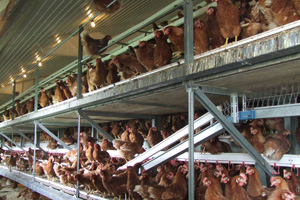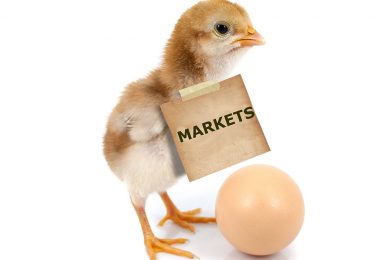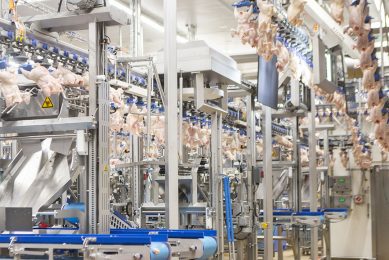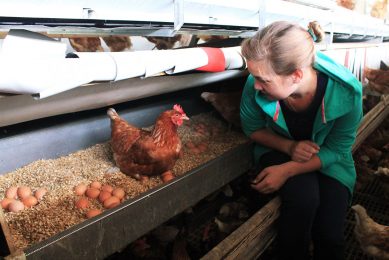Challenges for the US poultry industry

The US poultry industry is facing a number of challenges. Besides the common economic and individual financial concerns the industry will increasingly be confronted with public health, environment and animal welfare issues.
By Dr Simon M. Shane, Durham, NC, USA
For many decades, the US broiler industry has relied on contractors to house rearing pullets, breeders and broilers. With industry contraction, a proportion of housing has become redundant. This has severe implications for the contactors that have assumed the obligation of mortgages. In some areas it is possible for owners of farms who have lost contracts to establish new arrangements with other integrators subject to proximity and demand. In the event of complete closure of one or more complexes in an area, demand for contractors evaporates. The result is that farmers are deprived of income, become delinquent in repayment of mortgages and may be forced to file for bankruptcy, relinquishing their farms and homesteads. This has drawn the attention of the current Administration to their plight and the Grain, Ingredients, Packers and Stockyards Administration, a regulatory agency of the USDA has imposed changes in contract terms to provide greater security for contractors. There is however a large disparity between a 15 year mortgage and a one to two year contract especially when broiler houses holding 20,000 birds cost upwards of €110,000.
Pilgrim’s Pride back into profitability
In reviewing profitability of the three public quoted broiler integrators, it is noted that since 2011, Pilgrim’s Pride has moved back into profitability (Table 1). Tyson Foods is a multi-segment company with production of beef, pigs and broilers. The contribution of the chicken segment is shown in Table 2. For the nine month period broiler sales amounted to €6,275 million, a 3.6% increase over the corresponding period in 2011. The broiler segment generated 25.2% of revenue but contributed 36% to operating income, representing a marked improvement over 2011. This extremely efficient company serves as a bellwether for the broiler industry and the results including return criteria follow Sanderson Farms closely. It will be some time before Pilgrim’s Pride achieves the same level of profitability and efficiency under their new ownership although considerable progress has been made in consolidation as evidenced by their most recent quarterly report.
Specialties and enriched eggs
With respect to the egg industry only Cal-Maine Foods can be evaluated as a pure US egg-production company. For the first quarter of fiscal 2013 ending September 1st, 2012 Cal-Maine Foods achieved sales of €210 million, a 20% increase over the corresponding first quarter of FY 2012. Net income rose three-fold compared to the first quarter of 2012 to €7.242 million. These results were achieved despite an adverse differential in feed cost equivalent to €423,000 for the quarter, resulting in a unit cost of 39 cents per dozen. Cal-Maine is fairly unique among egg producers in that it is rapidly increasing the proportion of speciality eggs, predominantly under the Eggland’s Best brand, marketed by an eponymous cooperative in which Cal-Maine is a significant minority shareholder. The benefit of speciality and enriched eggs is denoted by the fact that the average price for generic eggs posted by Cal-Maine was €0.95 per dozen compared to branded products at €1.50 per dozen for the quarter.
Feed or biofuels
There is less pessimism in the poultry industry although at the present time there is little that can be done to redress the shortage of grain associated with drought. All of the associations representing poultry and livestock production have petitioned the Federal government to relax the renewable fuel standard which mandates the significant diversion of maize to biofuels. This is an intensely politically charged issue and ethanol production has bipartisan support by representatives and Senators from the Midwest states producing maize. There are some indications of the need to relax the programme supported by legislators from industrialised states whose constituents bear the cost of the economically and environmentally unsound programme of diversion of food to fuel. Opposition in the US is now reflected in similar initiatives in the EU where the inflationary effect and socio-economic impact of the biofuels programmes is becoming evident both in industrialised and developing nations.
Public and consumer issues
The intensity of environmental pressure on producers appears to have relaxed as most of the companies with deficiencies have remedied their violations albeit at a high cost. There are a number of issues facing producers in the coming year including steady pressure to transition from a reliance on antibiotics for growth promotion to alternatives including probiotics and prebiotics. The disease situation is stable with only erosive conditions detracting from optimal production. Seasonally, E. coli is a problem although improved vaccination, biosecurity and above all environmental control of houses appears to be reducing the intensity of losses both in terms of liveability and plant quality.
Welfare is a major consideration with heavily financed animal rights groups promoting “improvements” in production procedures. In 2011 the United Egg Producers representing 95% of egg production in the US and their major antagonist, the Humane Society of the United States reached an agreement to convert existing cage housing to enriched modules over a fifteen year period. It will however be necessary to embody the agreement in federal legislation to ensure a uniform standard of housing and management throughout the nation. There is considerable interstate movement of eggs from areas with a surplus of eggs to states and regions in deficit and the prospect of individual states imposing protective barriers must be addressed on a national level.












